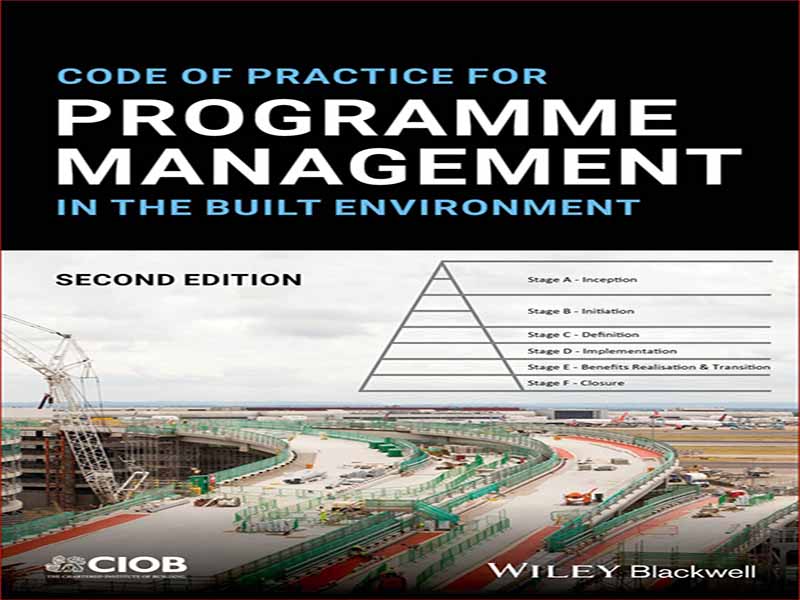- عنوان مجله: Code of Practice for Programme Management in the Built Environment
- نویسنده: John Wiley
- حوزه: مدیریت برنامه
- سال انتشار: 2024
- تعداد صفحه: 193
- زبان اصلی: انگلیسی
- نوع فایل: pdf
- حجم فایل: 17.0 مگابایت
این ویرایش دوم از کد عملکرد برای مدیریت برنامه در محیط ساخته شده یک پیشرفت طبیعی از ویرایش اول است و بر اساس ویرایش ششم اخیر منتشر شده از کد عملکرد بسیار موفق برای مدیریت پروژه برای محیط ساخته شده است. ویرایش اول این آیین نامه یک برنامه را به این صورت تعریف می کند: مجموعه ای از پروژه های مرتبط که برای دستیابی به منافع مورد نظر مؤثرتر از مدیریت آنها به عنوان گروهی از پروژه های فردی هماهنگ شده اند. در این ویرایش دوم، ما این تعریف را حفظ می کنیم. در برخی از سازمان ها، برنامه ها با یک مورد تجاری منفرد ایجاد می شوند که با مجموعه ای از مزایا هماهنگ است. در حالی که برای دیگران، موارد تجاری و منافع در سطح پروژه و نه برنامه تعریف می شود. با این حال، در هر دو مورد، پروژه ها به عنوان یک برنامه به منظور دستیابی به اهداف استراتژیک سازمان به طور موثرتر ارائه می شوند. ما “برای محیط ساخته شده” را حفظ کرده ایم زیرا همچنان شاهد پروژه های بسیاری هستیم که صرفاً مربوط به ساخت و ساز یا توسعه نیستند. به عنوان مثال، اگر برخی از بخشهای مشتری را که در ایجاد تسهیلات و/یا زیرساختهای جدید، مانند بزرگراهها، راهآهن، فرودگاهها، کشتیرانی، هستهای و غیره درگیر هستند، در نظر بگیریم، همه اینها احتمالاً پروژههایی را در بر میگیرند که مرتبط با ساخت و ساز نیستند. . اینها ممکن است شامل رشته هایی مانند فناوری اطلاعات، مدیریت منابع انسانی (HRM)، ظرفیت سازی، بازاریابی و غیره باشد. در واقع، حتی پیشرفتهای اصلی ساختوساز ممکن است شامل رشتههای مشابه به عنوان پروژههای مستقل در یک برنامه باشد. ویرایش ششم مدیریت پروژه همچنان به ارائه رهنمودهای مربوطه و الزامات رویه ای برای مدیریت موفق پروژه های فردی ادامه می دهد. این ویرایش دوم از مدیریت برنامه، عناصر عملکرد و رویههای ویژه مدیریت و تحویل موفقیتآمیز تعدادی از پروژههای مرتبط را در محیط ساخته شده، با تمرکز در سطح برنامه بر ایجاد هماهنگ ارزش، که خود را به عنوان یک تجارت نشان میدهد، توسعه میدهد. -خاموش در رابطه بین (شکل 1.1 را ببینید): (i) مزایا و نتایج (از طریق خروجی ها). (ii) ریسک ها و فرصت ها؛ (iii) الزامات و اهداف (شامل هزینه و زمان).
This second edition of the Code of Practice for Programme Management in the Built Environment is a natural development from the first edition and builds on the recently published sixth edition of the highly successful Code of Practice for Project Management for the Built Environment. The first edition of this Code of Practice defined a programme as: a collective of related projects coordinated to achieve desired benefits more effectively than when managing them as a group of individual projects. In this second edition, we retain this definition. In some organisations, programmes are created with a single business case aligned to a set of benefits. While for others, business cases and benefits are defined at project and not programme level. However, in both cases, the projects are delivered as a programme in order to achieve an organisation’s strategic objectives more effectively. We have retained ‘for the built environment’ because we continue to see many projects that are not solely construction or development-related. For example, if we consider some of the client sectors involved in creating new facilities and/or infrastructure, such as highways, rail, airports, shipping, nuclear, etc., all of these are likely to incorporate projects that are not related to construction. These may include disciplines such as information technology, human resources management (HRM), capacity building, marketing, etc. Indeed, even mainstream construction developments may include similar disciplines as self-contained projects within a programme. The sixth edition of Project Management continues to provide the relevant guidance and procedural requirements for the successful management of individual projects. This second edition of Programme Management further develops the elements of functionality and procedures specific to the management and successful delivery of a number of related projects within the built environment, focusing at the programme level on the coordinated creation of value, which presents itself as a trade-off in the relationship between (see Figure 1.1): (i) Benefits and outcomes (via outputs); (ii) Risks and opportunities; (iii) Requirements and objectives (incl. cost and time).
این کتاب را میتوانید از لینک زیر بصورت رایگان دانلود کنید:
Download: Code of Practice for Programme Management in the Built Environment



































نظرات کاربران